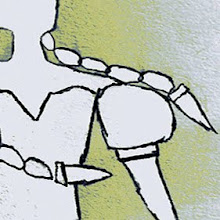Take a look inside Fabre's Book of Insects. It is a non-fiction book that is a retelling of Alexander Teixeira de Mattos' (1865–1921) translation of autodidact Jean-Henri Fabre's Souvenirs entomologiques. It includes 12 color plates by artist Edward Detmold (1883–1957). The original retelling was published in 1921.
The book talks about insects in real life, mythology and folklore.
The book talks about insects in real life, mythology and folklore.
The Sacred Beetle
The Cicada
The Praying Mantis
The Pelopaeus Spirifex
The Psyches
The Spanish Copris
The White-Faced Decticus
Common Wasps
The Field Cricket
The Sisyphus
Italian Locusts
The Anthrax Fly
Original illustrations and age toning removed versions by John (the ones presented here) can be found @ old book art dot com.
View the complete virtual book here.
It begins like that:
« We all have our own talents, our special gifts. Sometimes these gifts seem to come to us from our forefathers, but more often it is difficult to trace their origin.
A goatherd, perhaps, amuses himself by counting little pebbles and doing sums with them. He becomes an as toundingly quick reckoner, and in the end is a professor of mathematics. Another boy, at an age when most of us care only for play, leaves his schoolfellows at their games and listens to the imaginary sounds of an organ, a secret concert heard by him alone. He has a genius for music. A third, so small, perhaps, that he cannot eat his bread and jam without smearing his face, takes a keen delight in fashioning clay into little figures that are amazingly lifelike. If he be fortunate he will some day be a famous sculptor.»
It begins like that:
« We all have our own talents, our special gifts. Sometimes these gifts seem to come to us from our forefathers, but more often it is difficult to trace their origin.
A goatherd, perhaps, amuses himself by counting little pebbles and doing sums with them. He becomes an as toundingly quick reckoner, and in the end is a professor of mathematics. Another boy, at an age when most of us care only for play, leaves his schoolfellows at their games and listens to the imaginary sounds of an organ, a secret concert heard by him alone. He has a genius for music. A third, so small, perhaps, that he cannot eat his bread and jam without smearing his face, takes a keen delight in fashioning clay into little figures that are amazingly lifelike. If he be fortunate he will some day be a famous sculptor.»














